Happy Confluence of Winter Books

 It is 10 below zero here today, and I just finished the perfect book to read when it is this cold. It also occasioned one of those happy confluences when a favorite children’s book suddenly appears in adult form and is equally good. I have probably read Winter Cottage by Carol Ryrie Brink 30 or more times. Of course I had discovered Caddie Woodlawn and Magical Melons and then Two Are Better Than One and Louly by third grade, but then when I discovered Winter Cottage, something about it made it my favorite of her books.
It is 10 below zero here today, and I just finished the perfect book to read when it is this cold. It also occasioned one of those happy confluences when a favorite children’s book suddenly appears in adult form and is equally good. I have probably read Winter Cottage by Carol Ryrie Brink 30 or more times. Of course I had discovered Caddie Woodlawn and Magical Melons and then Two Are Better Than One and Louly by third grade, but then when I discovered Winter Cottage, something about it made it my favorite of her books.
 I finally had a name for the reason after I read The Poetics of Space in college, and recognized what Gaston Bachelard called “intimate immensity” or the sheltered, small, hidden space that allows the spirit to roam freely. Bachelard’s contention is that such phenomena are ontological and that we experience them when a writer is able to express them for us. I experienced intimate immensity when I read Winter Cottage.
I finally had a name for the reason after I read The Poetics of Space in college, and recognized what Gaston Bachelard called “intimate immensity” or the sheltered, small, hidden space that allows the spirit to roam freely. Bachelard’s contention is that such phenomena are ontological and that we experience them when a writer is able to express them for us. I experienced intimate immensity when I read Winter Cottage.
The protagonist is Araminta Sparks, called Minty, who is on her way to Chicago with her sister Eglantine (Eggs) and their father Pops. It is the midst of the Depression, and their car breaks down on a back road they have accidentally turned onto. They find a summer cottage on a lake and “break in” to spend the night. Because they are hauling all the canned goods from Mr. Sparks’ failed grocery store, they eventually decide to winter there, planning to leave “rent” for the landlords whom they do not know.
Moving on to North of Hope. I had discovered the Loyola Classics series in Fall of 2008, and after I bought and read In This House of Brede, I made it known that I would like several more from the series. My lovely husband bought me three for Christmas last year, including North of Hope because Andy knows I like books about hardship, cold, Native Americans, and Catholics. Besides, look at that cover. Is that not lovely?

 When the weather turns cold and nasty here, I usually pull out The Shipping News or Alistair MacLeod’s Island to make me count my blessings, but this year I picked up North of Hope. (I would also suggest Peace Like a River in this grouping). Jon Hassler is new to me, but I am now going to run out and read more of his books. He was a high-school English teacher and then taught college, later becoming Writer in Residence at Saint John’s University in Minnesota.
When the weather turns cold and nasty here, I usually pull out The Shipping News or Alistair MacLeod’s Island to make me count my blessings, but this year I picked up North of Hope. (I would also suggest Peace Like a River in this grouping). Jon Hassler is new to me, but I am now going to run out and read more of his books. He was a high-school English teacher and then taught college, later becoming Writer in Residence at Saint John’s University in Minnesota.
North of Hope focuses on Father Frank Healy, a priest having a crisis of not so much faith, as hope. He returns to his hometown parish to sort this through and is reunited with his best friend/almost girlfriend from high school Libby, who, though not religious, is similarly facing a crisis of hope as she deals with her manic-depressive daughter, drug-dealing doctor husband, and her own rekindled passion for Frank. These two spend a winter supporting each other through some true tragedies, and find in each other’s Platonic love and support, the means to find hope once again.
Reading Winter Cottage on a cold day is like drinking hot cocoa with marshmallows. Reading North of Hope was like drinking very strong espresso with maybe a shot of whiskey: adult, realistic, true, bitter, and yet still warming. The epistle from this morning’s Mass readings was from First Corinthians: “When I was a child, I used to talk as a child, think as a child, reason as a child; when I became a woman, I put aside childish things.” As a woman I have not totally put aside childish things; I still read the Little House books and I still read Winter Cottage. As a child, these books were an escape into another world, a rural, character-building place I wanted to be. And when I reread these books now, they do rekindle that romantic, adventurous feeling that inspired me as a girl.
But now I LIVE in that world, where things are rural and character-building, and I cherish the tales of adults facing these hardships with courage and integrity. Frank Healy is my grown-up Minty Sparks. The other time I had a similar book confluence was when I discovered Willa Cather’s Prairie Novels and had found the adult equivalent of Laura Ingalls Wilder. Alexandra Bergson is now my role model as much as ten-year-old Laura was.

 In addition to the tough weather-beaten and life-beaten heroes I sought, I was also looking for books that created that “intimate immensity” of a small, warm, protected place in the midst of the snow and the chaos and the hardship. I think even as a kid I kind of knew that life could be a tough journey, and I girded my loins by finding heroines who took it on bare-handed and adult characters who provided safety and warmth. There is Pops at left, making his famous pancakes. That kitchen is warm, and light, and smells good. At right is Pops playing chess by the fire. It’s cold outside, and Minty’s mom is dead, and they have no home or money, and yet they have made a place of safety.
In addition to the tough weather-beaten and life-beaten heroes I sought, I was also looking for books that created that “intimate immensity” of a small, warm, protected place in the midst of the snow and the chaos and the hardship. I think even as a kid I kind of knew that life could be a tough journey, and I girded my loins by finding heroines who took it on bare-handed and adult characters who provided safety and warmth. There is Pops at left, making his famous pancakes. That kitchen is warm, and light, and smells good. At right is Pops playing chess by the fire. It’s cold outside, and Minty’s mom is dead, and they have no home or money, and yet they have made a place of safety.
In North of Hope that place of safety and warmth is much more abstract, in the way that adult things are. One character dies when his car goes through the ice, another is hospitalized in a mental clinic, another comes close to throwing herself in front of a train. There are no places of comfort for many of these characters. Frank has to find that place inside himself, as do the other troubled characters in the book. Most of them feel North of Hope itself, and hope IS that warm place by the fire. The hard thing in adulthood is creating that Winter Cottage metaphorically. And within.
From “Winter Barley” by Andrea Lee

The Storm
Night; a house in northern Scotland. When October gales blow in off the Atlantic, one thinks of sodden sheep huddled downwind and of oil cowboys on bucking North Sea rigs… even a large solid house like this one feels temporary tonight, like a hand cupped around a match. Flourishes of hail, like bird shot against the windows; a wuthering in the chimneys, the sound of an army of giants charging over the hilltops in the dark…
Halloween
Bent double, Edo and Elizabeth creep through a stand of spindly larch and bilberry toward the pond where the geese are settling for the night. It is after four on a cold, clear afternoon, with the sun already behind the hills and a concentrated essence of leaf meal and wet earth rising headily at their footsteps – an elixir of autumn… Now from the corner of the grove, Edo and Elizabeth spy on two or three hundred geese in a crowd as thick and racuous as bathers on a city beach: preening, socializing, some pulling at sedges in the water of the murky little pond, others arriving from the sky in unraveling skeins, calling, wheeling, landing….

A tumult of wind and dogs greets them as they pull up ten minutes later to the house. Dervishes of leaves spin on the gravel … Both Elizabeth and Edo stare in surprise at the kitchen windows, where there is an unusual glow. It looks like something on fire, and for an instant Edo has the sensation of disaster – a conflagration not of this house, nothing so real, but a mirage of a burning city, a sign transplanted from a dream…
Elizabeth sees quite clearly what Nestor and his cousins have done and, with an odd sense of relief, starts to giggle. They’ve carved four pumpkins with horrible faces, put candles inside, and lined them up on the windowsills… “It’s Halloween,” she says, in a voice pitched a shade too high…[Edo] hurries inside, telling her to follow him.
Instead, Elizabeth lets the door close and lingers outside, looking at the glowing vegetable faces and feeling the cold wind shove her hair back from her forehead… she thinks of a Halloween in Dover when she was eight or nine and stood for a long time on the doorstep of her own house after her brothers and everyone else had gone inside. The two big elms leaned over the moon, and the jack-o’-lantern in the front window had a thick dribble of wax depending from its grin…She’d stood there feeling excitement and terror at the small, dark world she had created around herself simply by holding back.”

I went through a series of many years when I snatched The Best American Short Stories volumes off the New Books shelf at the library as soon as they arrived. Now, not so much. The 1993 edition came out in the midst of my Louise Erdrich jag, and since she was editor that year, I very much snagged and devoured. I was VERY struck by the short story “Winter Barley” by Andrea Lee, not so much for the plot but for the setting and the mood.
A week ago I made the very old librarian go down and retrieve 1993 for me from the basement (I offered to go down there myself, but that is where the very secret books are kept, like A House Like a Lotus by Madeleine L’Engle. What? because of the lesbianism?) and I reread this story and was again transported. This story has taken the place of Mr. McFadden’s Halloween* and The Halloween Tree in my repertoire of seasonal , transporting books. So above are my favorite chunks with some visuals to go along.
This story was originally published in The New Yorker and can be read (if you are a digital subscriber) here.Or you can get the 1993 edition of The Best American Short Stories. Here is the New Yorker’s abstract:
“Elizabeth, 30, a banker from Massachusetts who is stationed in Rome, and Edo, 60, an exiled prince from an Eastern European kingdom now extinct, have an affair at his home in Scotland. They meet at Easter. Elizabeth is invited to Scotland by Edo’s gay nephew, Nestor, her neighbor in Rome. Nestor doesn’t show up, having deliberately planned to throw the two of them together. Edo regales her with anecdotes about his world travels, and challenges her with his snobbery. They become lovers, although Elizabeth does not feel that she is in love with Edo. She is bored by his interest in water fowl; he has designed his estate to attract them. At Halloween, Nestor and two aristocratic friends arrive in Scotland. They and Edo try to offend Elizabeth with bawdy songs and stories. Edo is annoyed when the young men surprise him and Elizabeth by putting jack-o’-lanterns in the windows. Elizabeth has a childhood memory of Halloween in Dover, Massachusetts. Edo recalls an experience in Persia, when two of his friends, Persian princes, surprised him in the desert, bearing falcons.”

 According to Andrea Lee’s Contributor’s Note in BASS, she was inspired by a line at the end of King Lear where Lear and Cordelia plan to escape together and enjoy “an improbable idyll” of father-daughter love. Lee wanted to replicate such an idyll in a modern context and so devised a “father-daughter” love affair. Why did an image of Michael Douglas and Catherine Zeta-Jones just jump into my head?
According to Andrea Lee’s Contributor’s Note in BASS, she was inspired by a line at the end of King Lear where Lear and Cordelia plan to escape together and enjoy “an improbable idyll” of father-daughter love. Lee wanted to replicate such an idyll in a modern context and so devised a “father-daughter” love affair. Why did an image of Michael Douglas and Catherine Zeta-Jones just jump into my head?

Ray Bradbury's painting of The Halloween Tree
Happy Halloween, everyone!
 * Speaking of Rumer Godden, I have lately discovered her adult novels. (I was a huge fan of her middle grade books: Mr. McFadden’s Halloween, The Doll‘s House, The Story of Holly and Ivy, Miss Happiness and Miss Flower, The Kitchen Madonna). I am now enjoying In This House of Brede about Benedictine nuns. Next on my list is Five for Sorrow, Ten for Joy. Both of these are part of the Loyola Classics series. More on that later. Check her out at left with her cats. The website for the Rumer Godden Literary Trust is wonderful.
* Speaking of Rumer Godden, I have lately discovered her adult novels. (I was a huge fan of her middle grade books: Mr. McFadden’s Halloween, The Doll‘s House, The Story of Holly and Ivy, Miss Happiness and Miss Flower, The Kitchen Madonna). I am now enjoying In This House of Brede about Benedictine nuns. Next on my list is Five for Sorrow, Ten for Joy. Both of these are part of the Loyola Classics series. More on that later. Check her out at left with her cats. The website for the Rumer Godden Literary Trust is wonderful.
Autumn in Central New York State
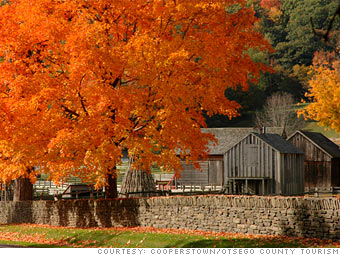 It was the sweetest time of the year, she thought. Coming home from the gallery, over the hills through Edmeston and New Berlin, she had watched the sallow final green of the fields go ocher; she had seen the brush, under a silky darkening sky, turn sere. The sumac was brilliant with its final burn. The wind, though still warm with late September, had a touch to it of October’s chilled-wine autumn taste. And here she was in a bulky sweater and jeans and her boat shoes, walking behind the house and sipping at the wind…
It was the sweetest time of the year, she thought. Coming home from the gallery, over the hills through Edmeston and New Berlin, she had watched the sallow final green of the fields go ocher; she had seen the brush, under a silky darkening sky, turn sere. The sumac was brilliant with its final burn. The wind, though still warm with late September, had a touch to it of October’s chilled-wine autumn taste. And here she was in a bulky sweater and jeans and her boat shoes, walking behind the house and sipping at the wind…
The garden behind the house, a hundred by a hundred feet or so, still held the heat of the day. She kneeled in the friable soil that she’d worked, manured, nourished, rotary-tilled, and weeded for years, and she stayed that way, on hands and knees, looking into the low sun. The green mulching plastic she hated but used because it kept down the weeds now caught the sunlight, and the garden looked striped into rows of rich earth and rows of shiny green liquid. The dark tomato vines on their green bamboo stakes were drooping with the weight of plum tomatoes she hadn’t ye plucked. Most were dark red, and even going soft.
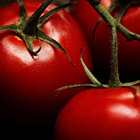 There were hundreds to take, and although she hadn’t planned to harvest tonight, the low orange sun, the sky that looked like a dark – an African – skin, and the smell of the vines, that luxuriance of greenness, made her take off her sweater and, with goose bumps pricking the flesh of her arms and her neck, tie its sleeves together and fill it with all the dry, firm tomatoes she could fit inside its upside-down torso…
There were hundreds to take, and although she hadn’t planned to harvest tonight, the low orange sun, the sky that looked like a dark – an African – skin, and the smell of the vines, that luxuriance of greenness, made her take off her sweater and, with goose bumps pricking the flesh of her arms and her neck, tie its sleeves together and fill it with all the dry, firm tomatoes she could fit inside its upside-down torso…
 There were days when the light and temperature made you want a sweater on not so much because you were chilly as because the day or evening looked like chill, suggested that being a little cold would be appropriate, and you wore something heavy, to acknowledge the world: Canada geese overhead, out of sight but hooting the shrill sad cries; the sky going one tone darker of blue; the roadside milkweed bobbing in a wind that would bring enough col within the week, she thought, to burst them into white silk hairs and crusty brown shell.
There were days when the light and temperature made you want a sweater on not so much because you were chilly as because the day or evening looked like chill, suggested that being a little cold would be appropriate, and you wore something heavy, to acknowledge the world: Canada geese overhead, out of sight but hooting the shrill sad cries; the sky going one tone darker of blue; the roadside milkweed bobbing in a wind that would bring enough col within the week, she thought, to burst them into white silk hairs and crusty brown shell.
From Harry and Catherine by Frederick Busch
 OK, I’ll admit that my adoration of this book is very far beyond normal. First, it is set RIGHT in my neck of the woods – I drive through Edmeston and New Berlin on a regular basis – so it makes my sometimes hum-drum life seem quite romantic. SECOND, I met Fred Busch, who was a professor at Colgate just to the north AND the founder of the Colgate Writers Workshop AND a phenomenal writer. His wife Judy was a mentor of mine when I first started teaching, and as Fred says in the dedication, This is Judy’s book. LAST, I think Catherine Hollander is just a kick-butt heroine, and I really jam to her artisty wood-chopping tomato-picking 40-something mother-of-boys Gestalt.
OK, I’ll admit that my adoration of this book is very far beyond normal. First, it is set RIGHT in my neck of the woods – I drive through Edmeston and New Berlin on a regular basis – so it makes my sometimes hum-drum life seem quite romantic. SECOND, I met Fred Busch, who was a professor at Colgate just to the north AND the founder of the Colgate Writers Workshop AND a phenomenal writer. His wife Judy was a mentor of mine when I first started teaching, and as Fred says in the dedication, This is Judy’s book. LAST, I think Catherine Hollander is just a kick-butt heroine, and I really jam to her artisty wood-chopping tomato-picking 40-something mother-of-boys Gestalt.
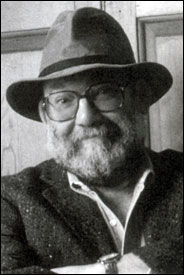 If you like this novel, there are two short stories that I know of that precede it, found in Domestic Particulars and Too Late American Boyhood Blues. (If anyone knows of other Harry and Catherine stories I missed, please let me know.) If you like books, read everything Fred Busch ever wrote because he was brilliant. I just ordered three used copies of his novel Sometimes I Live in the Country to foist onto my students from Sherburne because it is set in their school. I have read Harry and Catherine probably 15 times.
If you like this novel, there are two short stories that I know of that precede it, found in Domestic Particulars and Too Late American Boyhood Blues. (If anyone knows of other Harry and Catherine stories I missed, please let me know.) If you like books, read everything Fred Busch ever wrote because he was brilliant. I just ordered three used copies of his novel Sometimes I Live in the Country to foist onto my students from Sherburne because it is set in their school. I have read Harry and Catherine probably 15 times.
Writing in the desert, an adobe study

I think that Death Comes for the Archbishop is my end-of-August read because the lovely painting on the cover of my copy is filled with blues and yellows and oranges, the colors of late summer/early autumn. Also, there is something about returning to teaching that calls up what little Bishop Latour I have in me. And of course, woodsmoke. If you have never read this book, don’t let the title dissuade you. Only the last, very-short chunk deals with his death. Most of the book is very lively and uplifting.
 …the Bishop sat at his desk writing letters … Father Latour had chosen for his study a room at one end of the wing. It was a long room of agreeable shape. The thick clay walls had been finished on the inside by the deft palms of Indian women, and had the irregular and intimate quality of things made entirely by the human hand. There was a reassuring solidity and depth about those walls, rounded at door-sills and window-sills, rounded in wide wings about the corner fire-place. The interior had been newly whitewashed, and the flicker of the fire threw a rosy glow over the wavy surfaces, never quite flat, never a dead white, for the ruddy colour of the clay underneath gave a warm tone to the lime wash. The ceiling was made of heavy cedar beams, overlaid by aspen saplings, all of one size, lying close together like the ribs in corduroy an clad in their ruddy skins. The earth floor was covered with thick Indian blankets; two blankets, every old, and beautiful in design and colour, were hung on the walls like tapestries.
…the Bishop sat at his desk writing letters … Father Latour had chosen for his study a room at one end of the wing. It was a long room of agreeable shape. The thick clay walls had been finished on the inside by the deft palms of Indian women, and had the irregular and intimate quality of things made entirely by the human hand. There was a reassuring solidity and depth about those walls, rounded at door-sills and window-sills, rounded in wide wings about the corner fire-place. The interior had been newly whitewashed, and the flicker of the fire threw a rosy glow over the wavy surfaces, never quite flat, never a dead white, for the ruddy colour of the clay underneath gave a warm tone to the lime wash. The ceiling was made of heavy cedar beams, overlaid by aspen saplings, all of one size, lying close together like the ribs in corduroy an clad in their ruddy skins. The earth floor was covered with thick Indian blankets; two blankets, every old, and beautiful in design and colour, were hung on the walls like tapestries.
On either side of the fire-place, plastered recesses were let into the wall. In one, narrow and arched, stood the Bishop’s crucifix. The other was square, with a carved door, like a grill, and within it lay a few rare and beautiful books. The rest of the Bishop’s libray was on open shelves at one end of the room.
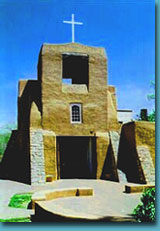 The desk at which the Bishop sat writing was an importation, a walnut “secretary” of American make. The silver candlesticks he had brought from France long ago. They were given to him by a beloved aunt when he was ordained.
The desk at which the Bishop sat writing was an importation, a walnut “secretary” of American make. The silver candlesticks he had brought from France long ago. They were given to him by a beloved aunt when he was ordained.
The young Bishop’s pen flew over the paper, leaving a trail of fine, finished French script behind in violet ink.
“My new study, dear brother, as I write, is full of the delicious fragrance of the pinon logs burning in my fireplace. (We use this kind of cedar-wood altogether for fuel, and it is highly aromatic, yet delicate. At our meanest tasks we have a perpetual odor of incense about us.)”
The Bishop laid down his pen and lit two candles with a splinter from the fire, then stood dusting his fingers by the deep-set window, looking out at the pale blue darkening sky. The evening-star hung above the amber afterglow, so soft, so brilliant that she seemed to bathe in her own silver light. Ave Maria Stella, the song which one of his friends at the Seminary used to intone so beautifully; humming it softly he returned to his desk and was just dipping his pen in the ink when the door opened…

Hinds’ Feet on High Places
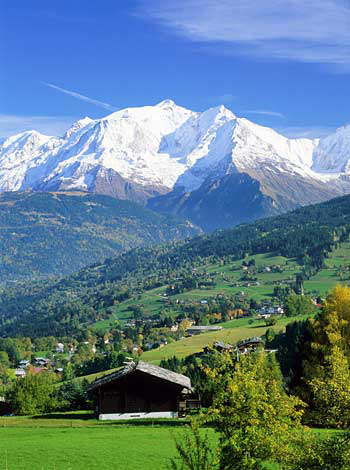
I just finished my annual re-read of Hannah Hurnard’s Hinds’ Feet on High Places. I first encountered this book when my sister was in college and I was still in high school, and the first time I read it I was working at a camp in the middle of the Adirondack Mountains. The copy I own is the 1977 edition; I bought it from Amazon Used to make sure I got the edition that I originally read.
Anyone who knows me well would be very surprised to hear how much I love this book and that I have probably read it at least 20 times.My love for this book is surprising even to me because I often do not like “Christian fiction”: I finally broke down and bought The Shack in the name of cultural literacy and had to force myself through it. Actually, I skimmed most of the second half, muttering “Yeah, yeah, yeah” as I flipped through the last fifty pages.
I know that my literary tastes expose me as a bit of a Cecil Vyse in A Room With a View. As Lucy explains after he walks out on Freddy singing: “It’s ugly things that upset him. He’s not uncivil to people.” Her mother replies, “Is it a thing or a person when Freddy sings?” I find myself in this bind when reacting to some spiritual novels, and I don’t like myself very much. I am sure all of these writers are much better people than I am, and I admire that. I just don’t like the writing. Much of it feels like eating a Twinkie when what I want is wheat bread.
 And Hinds’ Feet on High Places is wheat bread for me, and I read it every June as I get ready for summer vacation. It is a completely unapologetic allegory, in the tradition of Everyman. Each character is named after a trait: Much Afraid, Craven Fear, Resentment, Suffering, and therefore the book is more like an icon than like a badly written novel sneaking spirituality in the back door. It reminds me of The Ladder of Divine Ascent. This is a painting I heard of in another of my re-reads: In the Spirit of Happiness by the Monks of New Skete, a Russian Orthodox Monastery near Albany. They are the same monks who raise German Shepherds and write the dog obedience books. The icon shows a group of monks ascending toward Christ while devils shoot arrows at them on the right and a group of angels cheers them on at left.
And Hinds’ Feet on High Places is wheat bread for me, and I read it every June as I get ready for summer vacation. It is a completely unapologetic allegory, in the tradition of Everyman. Each character is named after a trait: Much Afraid, Craven Fear, Resentment, Suffering, and therefore the book is more like an icon than like a badly written novel sneaking spirituality in the back door. It reminds me of The Ladder of Divine Ascent. This is a painting I heard of in another of my re-reads: In the Spirit of Happiness by the Monks of New Skete, a Russian Orthodox Monastery near Albany. They are the same monks who raise German Shepherds and write the dog obedience books. The icon shows a group of monks ascending toward Christ while devils shoot arrows at them on the right and a group of angels cheers them on at left.
Hinds’ Feet on High Places is similarly and unapologetically allegorical. The premise of the book is that Much Afraid, a young crippled shepherdess in the employ of the Shepherd, asks to be taken to the High Places away from her Fearing relatives, where “perfect love casteth out all fear.” The Shepherd is overjoyed to grant this request, has been waiting for Much Afraid to ask, and gives her as her companions on the journey Sorrow and Suffering to help her up the mountain.
Here I stop and say “Thank you, sir. May I have another” because I need this God Smack. Asking to walk a spiritually evolutionary pathway is not buying an airline ticket to Jamaica. It is taking off your shoes and heading over the hot coals. We are “too, too solid flesh” and the only way to get it in shape is through training, which is another reason I love this book: it reminds me of the summer of 1988 when I backpacked through Europe alone. I lived on $20 a day, filling my pockets with bread and cheese at the Youth Hostels and hiking everywhere. My trip included a week in a tiny hostel in the Austrian Alps, far enough up that I could hike up to the snowline. By the end of the summer, I was a Lean Mean Hiking Machine and also quite able to handle myself in just about any strange circumstance.
The allegory is both so true and so overt that it allows complete entrance of the individual reader into the tale. Nothing blocks the reader from inserting the self: no silly plot devices or clever new metaphors that distract. Just a nearly skeletal rendering of the indeed harsh reality of the spiritual journey. Very few butterflies and rainbows but plenty of drear landscapes and difficult delays.
As Much Afraid makes her journey, here are the places she must traverse:
Detour Through the Desert, symbolizing long and difficult periods of bleakness and hardening to difficulty
On the Shores of Loneliness, symbolizing long periods of aloneless and solitude
Great Precipice Injury, symbolizing the truly treacherous task of attempting holiness
The Forests of Danger and Tribulation, symbolizing the hardships that will intensify once you get closer
The Mist, symbolizing periods of confusion and tedium
The Valley of Loss, symbolizing the seeming destruction of all that has been gained
The Place of Anointing, symbolizing the times of peace allowing preparation for great tragedy
Grave on the Mountains, symbolizing the requirement to give up all you had hoped for
Healing Streams, symbolizing the grace that comes after complete surrender of personal will
High Places, symbolizing the freedom and clarity of spiritual life beyond personal dreams
This book knocks me flat every time I read it. It is the astringent reminder of just how difficult a task it is to set oneself on the spiritual path. Along the way, Much Afraid’s enemies attack her repeatedly: Self-Pity, Resentment, Bitterness, they all make an appearance and try to divert Much Afraid from her goal. I have been there, and these vile enemies, which of course come from within, do try their darnedest to halt my progress.
I re-read this book every year as an assessment: Which of these places have I recently traversed? How did I handle it? Where am I on this journey? Which of these enemies am I listening to?
This year, with all the knowledge about Asperger’s I have gained in the past twelve months, one scene jumped out at me in starker contrast than in my previous readings. Much Afraid is told she is very close to her goal and is directed to go alone to a rocky crag where a silent preist stands at a grim altar. The Shepherd tells her, “Take the natural longing for human love which you found already growing in your heart when I planted my own love there and go up into the mountains to the place that I shall show you. Offer it there as a Burnt Offering unto me.”
Much Afraid, knowing that she hears aright, proceeds. She accepts that 1) she may have been deceived by the Shepherd all along 2) she is giving up her heart’s desire 3) her enemies might be right that she will be abandoned on “some cross” 4) she will do it anyway because she wants the Shepherd more than the promises. Fearing she cannot do it, she asks the preist there to do it for her and also asks him to bind her in case she struggles to prevent it.
 When Part One ends, she has suffered her all, given her all, and accepts that “It is finished.” This part is so important and struck me so this time through. I can trace my own path through every one of those parts of the journey: suffering, loneliness, injury, confusion, danger. But I am not sure that I have made this final sacrifice.
When Part One ends, she has suffered her all, given her all, and accepts that “It is finished.” This part is so important and struck me so this time through. I can trace my own path through every one of those parts of the journey: suffering, loneliness, injury, confusion, danger. But I am not sure that I have made this final sacrifice.
Many of the Asperger’s books say that the hardest part for a spouse is to accept that you might never get the kind of love and empathy one would wish from a partner. Many women cannot accept this and leave to find it elsewhere. Other women take the gifts that are offered and find that empathy elsewhere, in friends or family.
Perhaps this is Summer 2009’s leg of the journey. I know I am not leaving, and I know I am currently seeking empathy and love in other places such as friends. But I also know that I have not yet really made that sacrifice and it lies before me.
For all she knows, Much Afraid has accepted her own death on that altar. And yet when she awakes after three days, she bathes in Healing Streams, is healed of all deformity and disfigurement, and is finally able to leap like a deer. She is turned into Grace and Glory, and her companions Sorrow and Suffering become Joy and Peace. These are the promises of the High Places, and yet here’s the rub: they lie the other side of that grim grave.
I know I’m not there yet. I know I’m closer to it. I know I fear it. Tough as I appear, I don’t like pain. I know that this event will be unseen, unknown, because it will happen inside.
The other annual event linked with this book is my climbing Bald Peak, which is in the Berkshires, an hour’s hike from the Bartlett Camp. I go there to steel myself and to physicalize the truths of this book and of every great spiritual tradition I have ever encountered. I also steel myself by listening to this beautiful album: Doug Howell’s settings of the poems from the book, which are all from The Song of Solomon.

Maybe this is the summer I finally get beyond the reach of Resentment and Bitterness and Self-Pity by ripping that human-love plant out, but maybe it’s not yet ready to be uprooted. In the meantime I will at least once again set my foot on the path, because the invitation is always there.
Writing by the ocean, under a tent, summer
This post is for my friend Kevin, an extremely good poet who should have his own blog because I forget to look at Facebook.
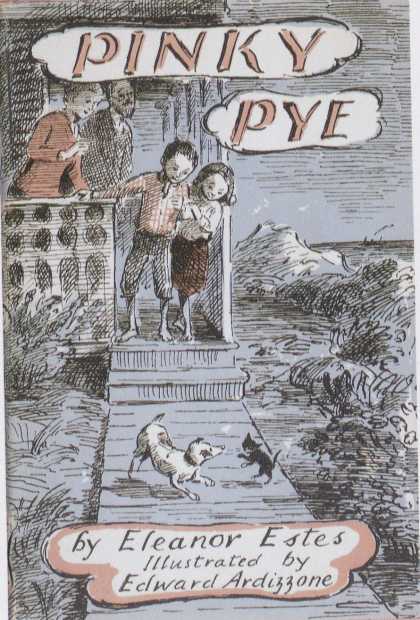
No cars were allowed on the island, nothing on wheels in fact, except bicycles and small boys’ express wagons…. Just as there were no vehicles, so there were no streets either. There were very narrow boardwalks instead, and people had to walk single file.
A short way ahead, on a slight rise so that it was a little higher than the others, Rachel could see a perfect little brown-shingled, weather-beaten cottage. It looked like a doll house. Many of the houses were like rectangular boxes. But this one had corners and elbows to it as though a room or a porch had been added here or there as an afterthought. Very pale pink roses spread sparsely over the tiny porch roof.
Stepping inside, almost expecting to discover the three bears in a little house like this, they found, not bears, but other surprises – little alcoves, built-in tables on which to work or eat or study or play, and one was set for supper.
During the afternoon Papa worked very hard putting up a huge green umbrella he had bought from the Army and Navy store. It was oblong in shape, more like a roof than an umbrella, and strong ropes on all four corners tied to staves in the ground held it securely down. Papa had put it up on the ocean side of The Eyrie, and it was spacious enough for all the family and even some guests to sit under on a hot day and look out over the wide Atlantic.
 Papa eased himself into his chair under the big green umbrella and, with injured foot resting on a stool and with a small table that fitted nicely over his lap for his typewriter … he put a piece of blank paper in the typewriter. He was accustomed to work, and just because he had a lame foot, he was not going to bask under the green umbrella and do nothing.
Papa eased himself into his chair under the big green umbrella and, with injured foot resting on a stool and with a small table that fitted nicely over his lap for his typewriter … he put a piece of blank paper in the typewriter. He was accustomed to work, and just because he had a lame foot, he was not going to bask under the green umbrella and do nothing.
In the cottage everyone was happy to hear the sounds of the typewriter, for it meant that, since Papa was at work, he was happy. Today, as on many other occasions, Papa preferred to stay at home, and with his typewriter on his lap, and Pinky [the kitten], too, he would work, think, study, dream.
While the family was away at the beach, picnicking, picking up shells, what was being typed under the green umbrella by the typing team of Pinky Pye and Papa?

CAT GAMES
Dear cats: Following are some simple games called Solitaire.
Game of Take Your Time Game of Pencil Grab Game of Pencil Hide Game of Mouse Game of Making Beds Newspaper Game Game of In and Out the Bureau Drawers Game of Half-Dead Mouse Game of Closet Creeps Game of Dog’s Ears Game of Fix the Eye Game of Catch the Fly Game of Faucet Drip Game of Pretend Mouse Game of Knock It Over Game of Woe-Be-Gone Bird
Uncle Bennie and Rachel were the first to arrive, hot, panting, and thirsty. Papa was still sitting under the green umbrella, typewriter table, typewriter, and Pinky all still on his lap. He was looking blandly and vacantly out toward sea. There was a lot of typing on the page. And all rather badly typed.

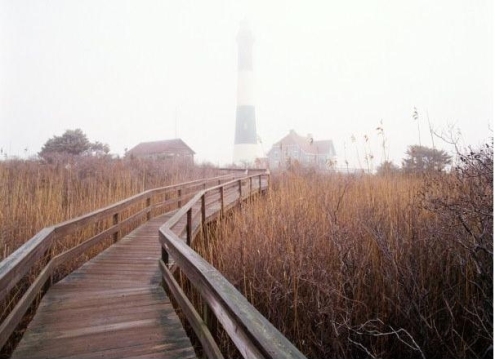
Pinky Pye is an annual re-read event for me once summer is under way. Does anybody else have season-starter re-reads? And, have a Fabulous Fourth!
Writing outside, a French garden, summer

The Professor had succeeded in making a French garden in Hamilton. There was not a blade of grass; it was a tidy half-acre of glistening gravel and glistening shrubs and bright flowers. There were trees, of course; a spreading horse-chestnut, a row of slender Lombardy poplars at the back, along the white wall, and in the middle, two symmetrical, round-topped linden-trees. Masses of green-brier grew in the corners, the prickly stems interwoven and clipped until they were like great bushes. There was a bed for salad herbs. Salmon-pink geraniums dripped over the wall. The French marigolds and dahlias were just now at the their best — such dahlias as no one else in Hamilton could grow.

It was just the sort of summer St. Peter liked, if he had to be in Hamilton at all. In those months when he was a bachelor again, he brought down his books and papers and worked in a deck chair under the linden-trees; breakfasted and lunched and had his tea in the garden. He was his own cook, and had laid in a choice assortment of cheeses and light Italian wines from a distinguishing importer in Chicago. Every morning before he sat down at his desk he took a walk to the market and had his pick of the fruits and salads. He dined at eight o’clock. When he cooked a fine leg of lamb, saignant, well rubbed with garlic before it went into the pan, then he asked Outland to dinner. Over a dish of steaming asparagus, swathed in a napkin to keep it hot, and a bottle of sparkling Asti, they talked and watched night fall in the garden. If the evening happened to be rainy or chilly, they sat inside and read Lucretius.
From The Professor’s House by Willa Cather
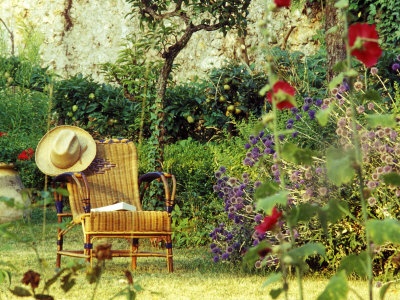
Writing by candle, sleeping porch, summer
 “That summer Chrys slept on a cot on a little screened porch at the back of her grandmother’s house. It was all her own place and nobody disturbed her. A big honey locust tree, full of white, scented blossoms, hung over the sleeping porch and let moonlight come seeping through the leaves onto her face as she slept. Under her bed Chrys kept a shoe box with some of her very personal and secret treasures, like the diary Cordy had given her on her birthday and the letter from Mr. Banks that had come from far-off Wisconsin where he was spending the summer with his family, and the ring shaped like a snake with a green stone eye that she had found on the way home from town one day. There were a spelling tablet and a well-sharpened stub of a pencil in the shoe box too. The spelling tablet was no longer used for such tiresome business as spelling. In it Chrys had written three poems, one about trees and one about kittens and one about falling snow. She had never shown the poems to any person in the world, not even to Cordy. She did not know if they were good or not, but they were hers, her own, and she was not ready to share them with anybody.
“That summer Chrys slept on a cot on a little screened porch at the back of her grandmother’s house. It was all her own place and nobody disturbed her. A big honey locust tree, full of white, scented blossoms, hung over the sleeping porch and let moonlight come seeping through the leaves onto her face as she slept. Under her bed Chrys kept a shoe box with some of her very personal and secret treasures, like the diary Cordy had given her on her birthday and the letter from Mr. Banks that had come from far-off Wisconsin where he was spending the summer with his family, and the ring shaped like a snake with a green stone eye that she had found on the way home from town one day. There were a spelling tablet and a well-sharpened stub of a pencil in the shoe box too. The spelling tablet was no longer used for such tiresome business as spelling. In it Chrys had written three poems, one about trees and one about kittens and one about falling snow. She had never shown the poems to any person in the world, not even to Cordy. She did not know if they were good or not, but they were hers, her own, and she was not ready to share them with anybody.
 “Before she undressed, Chrys lighted a stub of a candle that sat in a saucer on the orange crate beside her bed. She sat on the bed and read over her three poems, and then she began to write on a fresh page of the spelling tablet. ”
“Before she undressed, Chrys lighted a stub of a candle that sat in a saucer on the orange crate beside her bed. She sat on the bed and read over her three poems, and then she began to write on a fresh page of the spelling tablet. ”
From Louly, by Carol Ryrie Brink
Protected: This video includes pictures of friends who might not want public access to their images. However, this was the only place I could post such a large video file. To protect their privacy, I have added a password to this post. Thank you!
Permalink Enter your password to view comments.
